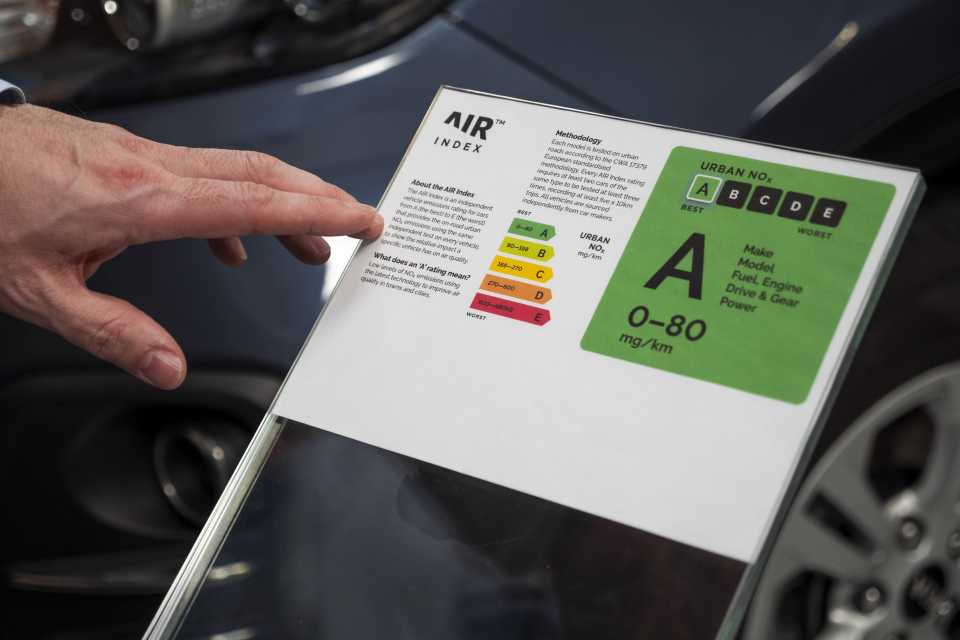The AIR Index ratings programme has been expanded to cover 90% of model variants in key segments, identifying the cleanest cars and offering an alternative to official tests NEDC and WLTP.
The AIR Alliance, a not-for-profit organisation independent of the car industry and governments, explains that the official system New European Driving Cycle (NEDC) was discredited as it underestimates real-world NOx by a factor of 4-5, and real-world CO2, the global warming gas, by around 40%. The WLTC remains a laboratory test with a cycle unrepresentative of the range of real-world driving, despite having smaller discrepancies.
With the launch of this expanded AIR Index programme, cities, retailers and fleet managers now have an alternative. Thanks to the coverage of over 90% of model variants in the key segments, the AIR Index can help make clean air zones and other incentive schemes to work more effectively.
The expanded AIR Index will allow the NOx-related air quality problem to be solved in the quickest and easiest way for cities, with the minimum impact necessary on car owners and fleets.
The AIR Alliance rates vehicles for NOx and CO2 separately, on scales from A to E. The Greater London Authority will be using the AIR Index to power its Cleaner Vehicle Checker, which works in conjunction with the Ultra Low Emissions Zone to inform and incentivise car drivers and buyers.
This expanded service from the AIR Alliance is based upon a recognised, European legal standardisation methodology in the form of CWA17379, published in January 2019, which was the product of CEN Workshop 90. At the heart of the ratings are vehicles that have been tested in full compliance with this methodology. These results are complemented by predicted ratings for most of the rest of the market using a ground-breaking artificial intelligence model that is trained on a large volume of real-world data. These data are from thousands of vehicles that have been tested in carefully controlled conditions on the public highway in the UK and mainland Europe.
The impact of over-emitting diesel-powered passenger cars and vans remains the prime focus for policy makers to improve urban air quality. This is particularly relevant for Euro 5 and pre-RDE Euro 6 diesel vehicles which cover a period from around 2010 until the introduction of RDE around 2018, although not all cause problems by exceeding NOx limits. These models are problematic because there are large numbers of them on the road and they are relatively young, so will remain in the road for many years. Of this generation of models, the expanded AIR Index covers around 90% of all model variants.
Nick Molden, co-founder of the AIR Alliance, said: “Creating a fully-fledged alternative to official ratings has been the objective of the AIR Alliance from the beginning, and we are pleased now to be able to launch the expanded AIR Index to offer an important practical tool to cities, buyers and the industry.”
“Reducing nitrogen oxide emissions is not the only type of pollution that is of concern, but it is perhaps the most pressing in the light of the systematic design problems of vehicles that were revealed by Dieselgate.”
Source: https://greenfleet.net
CUT COTS OF THE FLEET WITH OUR AUDIT PROGRAM
The audit is a key tool to know the overall status and provide the analysis, the assessment, the advice, the suggestions and the actions to take in order to cut costs and increase the efficiency and efficacy of the fleet. We propose the following fleet management audit.




